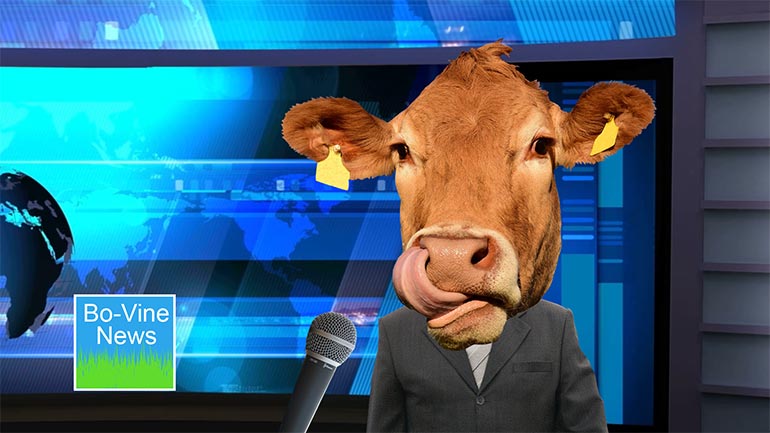ShmoopTube
Where Monty Python meets your 10th grade teacher.
Search Thousands of Shmoop Videos
Econ: What is the Producer Price Index (PPI)? 3 Views
Share It!
Description:
What is the Producer Price Index (PPI)? The Producer Price Index is a composite of thousands of price indexes from sellers of of goods and services within the US. The three sectors which comprise the PPI are: commodity based, industry based, and the wholesale index, renamed in the late 1970s as commodity based, final demand-intermediate demand.
Transcript
- 00:00
And finance Allah shmoop What is the producer's price index
- 00:06
or P P I or pit All right short answer
- 00:10
People A measure of wholesale inflation You know inflation Pump
- 00:15
air into a football It gets bigger Keep eating Boston
- 00:18
cream pies and well you'll get bigger Yep those air
Full Transcript
- 00:20
couple of kinds of inflation will in economics Inflation has
- 00:24
to do with prices when prices get bigger like bigger
- 00:27
numbers That's inflation A couple of years ago a movie
- 00:30
ticket cost ten bucks Now it's like twelve fifty That's
- 00:33
inflation Inflation refers to the amount that prices rise over
- 00:37
a given time Right We index it We categorize it
- 00:40
We knew Maris eyes It sort of Inflation is a
- 00:43
key driver of the pp I At least that's what
- 00:45
it's measuring But people measures inflation in a specific part
- 00:49
of the economy See it's relatively easy to see how
- 00:52
much prices are increasing When you're talking about a single
- 00:54
product like that movie ticket right You go to the
- 00:57
store to pick up some adult diapers Eso you Khun
- 00:59
Stream Black mirror without any You know interruptions Been there
- 01:03
done that this week A pack of those diapers cost
- 01:05
you twelve fifty Well last month when you were making
- 01:08
your way through Season five of breaking bad Well a
- 01:11
pack back then Cost twelve thirty five Two months from
- 01:14
now when you're heavy into orange is the new black
- 01:17
Well you head back to the store and a pack
- 01:20
of adult diapers is now a twelve sixty So from
- 01:23
twelve thirty five to twelve fifty two twelve sixty well
- 01:26
prices are going up up up for adult diapers The
- 01:29
A D II or adult diaper inflation index is climbing
- 01:33
fast In just over two months they went up about
- 01:35
two percent or an annualized inflation rate of around twelve
- 01:39
percent That's monstrous people means prices at that rate would
- 01:42
double every six years Well following one products Inflationary tales
- 01:46
should be pretty easy But when you try to discern
- 01:49
inflation rates across an entire economy while things get more
- 01:52
complicated in a dynamic large complex economy like ours well
- 01:56
prices on different products move different directions at different times
- 02:00
Adult diapers might see rising prices but at the same
- 02:03
time prices for ah you know hemorrhoid cream might be
- 02:06
dropping Meanwhile prices for stool softeners are holding steady different
- 02:12
items different inflation trends because different parts of the economy
- 02:15
can have different price trends While there are different economic
- 02:19
stats to track separate segments of the economy the Producer
- 02:24
Price Index is one of these The PP I measures
- 02:26
a particular kind of inflation Specifically it tracks the changes
- 02:29
in prices for wholesale goods Hence the catchy title ng
- 02:33
there with the word produce Sir Price Indexing The first
- 02:36
Pee there Well the P P I is not about
- 02:38
prices consumers pay at the store Rather the PP I
- 02:41
follows prices that companies pay to get the raw materials
- 02:44
they used to make this stuff that shows up in
- 02:46
the aisles at Walmart or it Amazons warehouses The pp
- 02:49
I contrast with the C P I or Consumer Price
- 02:53
Index which measures the retail price is that you know
- 02:56
the regular Joe consumer pays well Here's a list of
- 02:59
some of the stuff that comprises the CP I this
- 03:02
stuff And here's a list of some of the stuff
- 03:04
that comprises the See Threepio Yeah it's different way digressed
- 03:08
Okay You make authentic raccoon skin caps to sell Teo
- 03:11
War of eighteen twelve reenactors you retail the caps for
- 03:15
a hundred bucks each Last month you paid an average
- 03:17
of ten dollars for a raccoon pelt The hundred dollars
- 03:20
retail price represents the consumer price for the cap That's
- 03:24
what the average Joe pays when he buys it in
- 03:26
the store Well Meanwhile the ten dollars for the pelt
- 03:28
represents one of the producer prices you pay You also
- 03:31
have to pay for string and pelt wax and whale
- 03:34
oil to run your authentic eighteen twelve era manufacturing facility
- 03:39
with looms and things But to keep it simple we'll
- 03:41
just look Att pelt prices for now is a stand
- 03:44
in for PP I hear this month the price of
- 03:46
the raccoon pelts goes up to an average of eleven
- 03:48
dollars each That's ten percent higher from where they were
- 03:51
last month So the raccoon pelt component of your personal
- 03:54
PP I was up ten percent from last month to
- 03:58
this month Well the real life P P I is
- 04:00
made of a day divers basket of wholesale goods energy
- 04:03
components like crude oil foodstuffs You know like the stuff
- 04:07
that contains things like weed or rice stuff like that
- 04:10
That's a foodstuff and other components that are included in
- 04:13
it You know from various industries Well they all get
- 04:15
averaged together to create a single measure or a single
- 04:18
index The U S government releases a monthly report outlining
- 04:21
changes in the P P I An increase of point
- 04:23
one percent or point two percent is considered normal Like
- 04:27
things go up to percent a year something like that
- 04:29
Anything above that well could indicate rising inflation pressure Right
- 04:33
Like prices are about to take off But people don't
- 04:35
freak out If one month shows a big move commodities
- 04:37
and wholesale prices tend to fluctuate quite a bit It
- 04:40
only starts to matter of big gains Start to pile
- 04:42
up for a few months in a row So even
- 04:44
though it doesn't measure direct consumer prices the PP I
- 04:47
represents an important economic measure So pay attention to it
- 04:51
Your coonskin cap business experience that ten percent rise in
- 04:54
wholesale prices this month walk the price Then for a
- 04:57
raccoon pelts rose from ten dollars to eleven dollars So
- 05:01
you have a decision to make you Khun Pass along
- 05:03
That cost or expense increased to you to your customer
- 05:07
increasing your retail price from one hundred bucks a unit
- 05:10
to one hundred one To cover that increase expensive a
- 05:12
buck a pelt Or you could just eat the additional
- 05:15
cost and well live with lower profit margins Usually businesses
- 05:19
are reluctant to suddenly pass on increased prices to their
- 05:22
loving customers since commodity markets fluctuate a good deal While
- 05:25
this month's cost increase can disappear next month and then
- 05:29
you just kind of forget about it Also retail markets
- 05:31
are generally competitive The first company to raise prices can
- 05:35
lose out on shelf space or distribution or customer awareness
- 05:39
which all Ri leads to a loss of market share
- 05:41
which would be bad But you went big market share
- 05:43
If you're going to be the king of the queen
- 05:45
of pelts selling if you raise your prices and your
- 05:48
competition doesn't follow suit while customers are going to flock
- 05:51
to the cheaper brand they get a price advantage because
- 05:53
well you panicked and raised prices and you really didn't
- 05:56
need to So if you raise your coonskin price is
- 05:58
one hundred one dollars Cover the rising costs while furry
- 06:01
tops might swoop in with a sail and grab up
- 06:04
a bunch of your customers with lost sales would hurt
- 06:07
more than a slight dip in profit margins That would've
- 06:10
happened Have you raised prices a dollar to cover yourself
- 06:12
So you hold steady and you hope the increased producer
- 06:14
prices or temporary and will you hold your breath with
- 06:17
a big oxygen bottle there However a company can't eat
- 06:20
increased costs forever An upward trend in the PP I
- 06:23
will eventually find its way to the C P I
- 06:26
and people is very important There's a lag between the
- 06:29
FBI and CP I Well the prices for your raccoon
- 06:31
pelts continue to rise It's eleven bucks this month Next
- 06:34
month that rise to eleven twenty five the following eleven
- 06:37
thirty five and six months down the road It's thirteen
- 06:40
dollars Yeah that's a thirteen bucks Well at that point
- 06:42
you can't take the expense increases anymore You have to
- 06:45
increase the price to your customers So you raise the
- 06:48
price for your coonskin caps to one hundred three dollars
- 06:51
making up for the three dollar price increase you've suffered
- 06:54
in buying raccoon pelts over the last several months But
- 06:56
prices for pelts are so high that furry tops in
- 06:59
can't swoop in Now with lower prices they have to
- 07:02
increase prices too because well they've been squeezed with the
- 07:05
same high pel prices you have And similarly the general
- 07:09
PP I figures eventually feed into higher retail price levels
- 07:12
If they don't hire PP I figures eat into corporate
- 07:15
profits which can impact Stock prices are probably would impact
- 07:18
stock prices and eventually the overall economy So yeah that's
- 07:21
the producer price index for pp I a measure of
- 07:24
wholesale inflation complex but still easier to keep track of
- 07:29
than all those Boston cream pies you ate last month
- 07:31
as you continue inflating No just just just just just
Up Next
GED Social Studies 1.1 Civics and Government
Related Videos
What is bankruptcy? Deadbeats who can't pay their bills declare bankruptcy. Either they borrowed too much money, or the business fell apart. They t...
What's a dividend? At will, the board of directors can pay a dividend on common stock. Usually, that payout is some percentage less than 100 of ear...
How are risk and reward related? Take more risk, expect more reward. A lottery ticket might be worth a billion dollars, but if the odds are one in...




